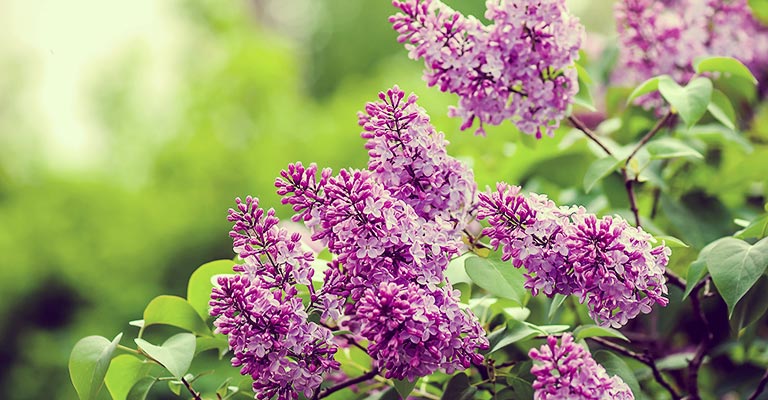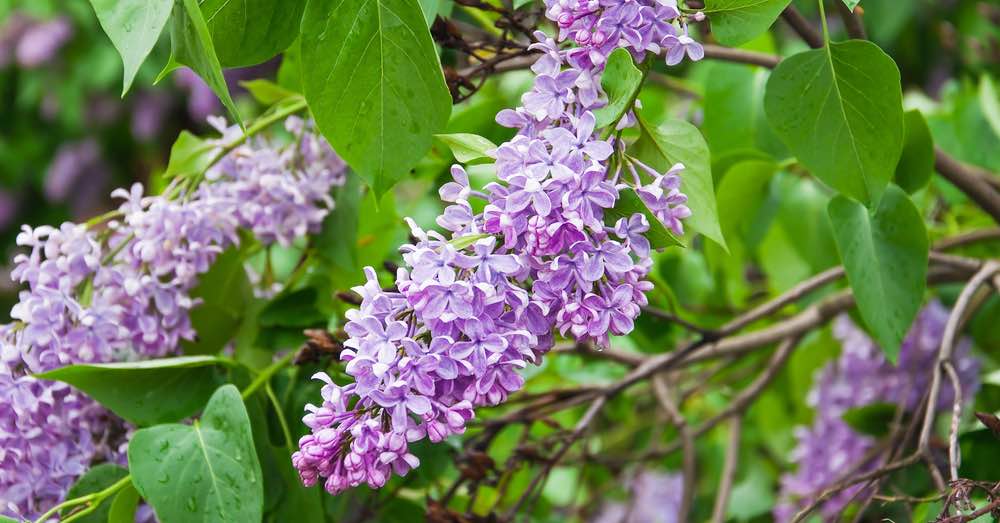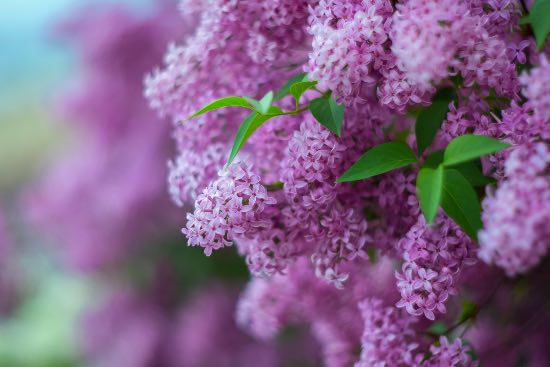Lilo or lilac care


Its flowers are one of the gifts of spring. And, although you may not have noticed their presence, it is more than usual to find these bushes throughout our geography. Something normal if we take into account that lilac or lilac care is so, so simple that we can well say that it is a plant that takes care of itself. What’s more: although it is not classified as rustic, it is true that its level of resistance is such that we can consider it within that category. Little work if we take into account that its flowering and perfume are a gift for the senses.
Before going into detail about lilac care, it is important to know something. We are talking about a bush that can become a tree, and that is deciduous. An important aspect to consider when designing our garden or terrace. But it is not the only one: the lilac only blooms during the spring, although it is true that its leaves last until autumn. For this reason, it doesn’t hurt to associate your planting with fall bulbs and spring bulbs. A great way to create a flower spot even when our lilacs have faded.
Well, although we are talking about a family with almost 30 species, lilac care is common to all its varieties. Some simple and assumable that, not for that, we have to stop complying.
IRRIGATION AND COLD, TWO OF THE MOST IMPORTANT LILO CARE
Beyond knowing the care of the lilac, you have to know its functionality in gardening. We are dealing with a type of bush that, well cultivated, can reach seven meters in height. Something to seriously consider at the time of planting, since it is important to foresee that it cannot be a problem when it grows. For this reason and for its size, the lilac is considered part of the selection of ornamental shrubs. For this reason, it is usually planted to create enclosures, but it is also grown in isolated beds. This does not mean that we cannot grow it in a pot: simply, its growth will not be as spectacular.
Planted in the ground or in a pot, lilac care is the same. And all of them seek a single goal: to give us their incredible flowering in the form of clusters. Let’s see them in detail!
1. Choose the planting place well, key for the lilac
Due to its rusticity, the lilac is a shrub that admits practically any type of soil. It can grow in sandy and even clay. But make no mistake: the ideal is that the land in which we plant is neutral or calcareous. Beyond the composition of the soil, there is something that is essential: drainage. The lilac does not tolerate waterlogging and, in addition, it is a plant with a high demand for water. That is why it is convenient to help you evacuate the excess irrigation water.

In addition to taking these aspects into account, one more detail to add in the planting of this bush. Although it is not one of the lilac care rigorously, it is a priority to plant it in late winter. A perfect time to ensure that it roots correctly. In addition, it is important to enrich the soil with organic matter before the time of planting.
2. Light, an aspect to consider for flowering
If we stick to lilac care, the ideal would be to place it in a place with lots of light. It is thanks to her that she manages to flower in conditions, so it is worth looking for a location with a lot of light. Interestingly, and despite this need, the lilac can also grow in a shady environment. What is the drawback of such a location? That it will not be able to bloom or have such a spectacular growth.
3. The cold, as necessary as the heat
Its sun needs are not the only thing that allows this plant to flourish. In contrast to this demand for heat, the lilac needs to be exposed to cold. And let’s not be afraid: it can withstand even 15 degrees below zero.

4. Watering, one of the most important lilac care
And we come to one of the lilo care that must be strictly adhered to. And it is that its irrigation needs are high so, considering the simplicity of its cultivation, it is not a plant suitable for the forgetful. Especially in the flowering and hot season, it is vital to keep its roots properly hydrated. This is also important in young and newly planted specimens. It will be thanks to the water that they will be able to grow properly.
Fundamental: prevent the soil from drying out between irrigation and irrigation.
5. Pruning, light and only in winter
Pruning is not one of the lilac care that we have to worry about. In case we want to shape the bush, we will have to do it in the winter months. And, we insist, only in winter. It is essential to prune during the vegetative rest of the plant, since doing it outside of it can damage the plant.
In the spring and summer months, simply pruning faded flower clusters will suffice. But be careful: without disturbing the branch. Just detaching the bunch.
6. Fertilizing in spring, one of the fundamental lilac care for flowering
The application of a mineral fertilizer at the time of flowering will help it to be more profuse. But beware: we will only use fertilizers at this time of year. Doing it outside of flowering can cause the plant to not give its characteristic flowers the following year.

In autumn, it is worth applying an organic fertilizer to our lilac. A good dose of compost will be enough to nourish it and prepare it for the arrival of winter.
7. Beware of pests
And we come to the last care of the lilo. But not because it was left for the end is less important. Actually, you have to be very clear that it is a plant that can be attacked by various diseases and insects. Some that must be detected early and stopped to prevent its expansion.
Because it is a water-loving plant, powdery mildew and virosis are two of the usual diseases in lilac. And not only that: its presence is synonymous with either an excess of irrigation or a lack of drainage. With the arrival of heat, you also have to be aware of eliminating pests from the garden. And it is that the lilac is usually a real magnet for the cochineal but, also, for the caterpillars of certain butterflies.
And now that you know how to care for a lilac, what else do you need to enjoy it?

![Photo of Orange Tree Care: [Soil, Humidity, Pruning and Problems]](https://www.complete-gardening.com/wp-content/uploads/2022/08/orange-tree-care-soil-humidity-pruning-and-problems-390x220.jpg)

![Photo of Salvia Microphylla: [Characteristics, Cultivation, Care and Disadvantages]](https://www.complete-gardening.com/wp-content/uploads/2022/08/salvia-microphylla-characteristics-cultivation-care-and-disadvantages-390x220.jpg)
